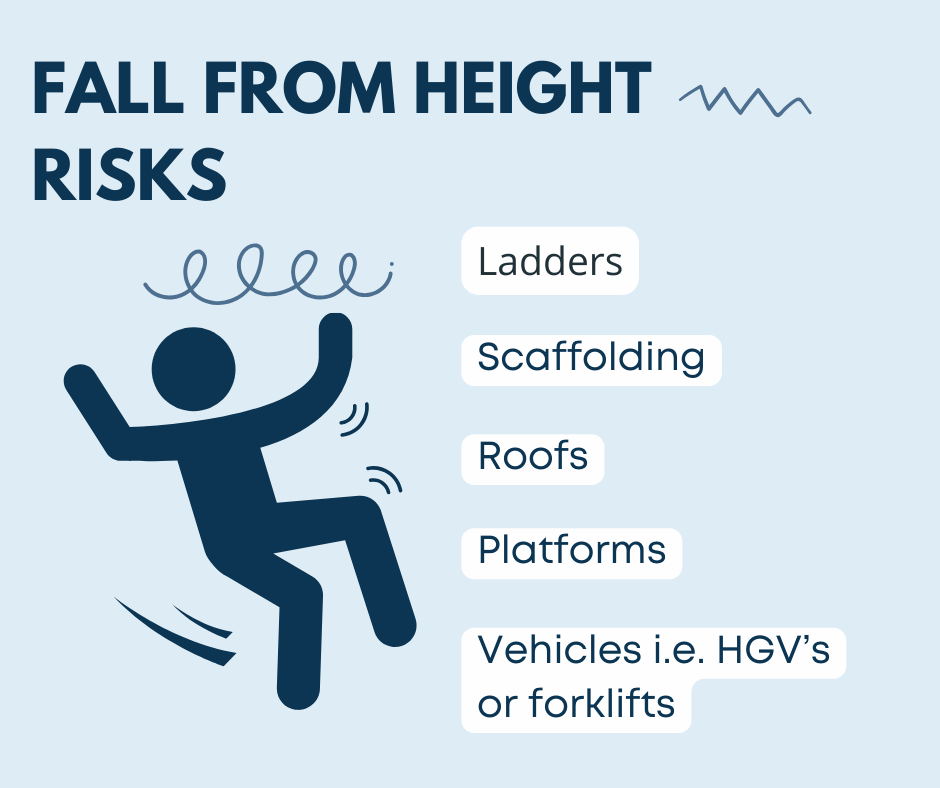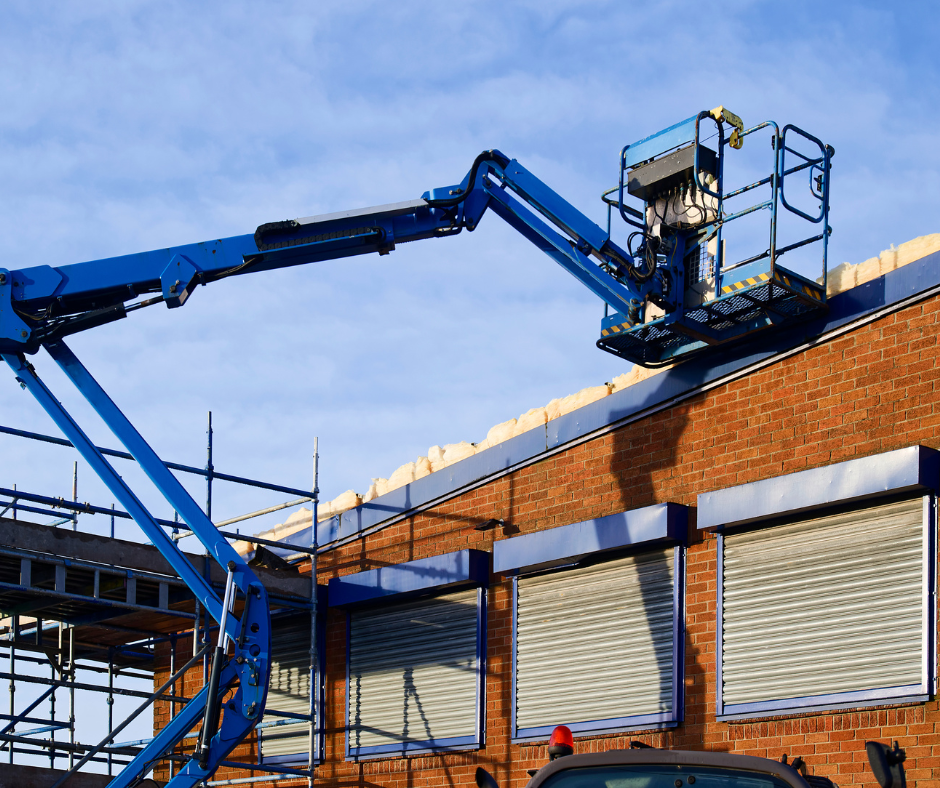Working at height is the biggest single cause of serious and fatal injuries within the construction industry – especially on smaller projects.
Over 60% of deaths during work at height involve falls from scaffolds, ladders, roof edges and working platform, and through fragile roofs or rooflights, it is essential this risk is assessed thoroughly.
What are the main risks of working at height?
 Working at height is defined as any place, including at or below ground level, where a person could fall a distance liable to cause personal injury, but does not include stairways or trips on the same level. Working at height can pose significant risks to individuals and can have severe consequences if activities are not sufficiently controlled.
Working at height is defined as any place, including at or below ground level, where a person could fall a distance liable to cause personal injury, but does not include stairways or trips on the same level. Working at height can pose significant risks to individuals and can have severe consequences if activities are not sufficiently controlled.
The most common risk associated with working at height is falling, such as falls from:
- ladders
- scaffolding
- roofs
- platforms
- vehicles i.e. HGV’s or forklifts
A fall could have been a direct cause of an unguarded opening or poor edge protection. Objects falling from height can also lead on from this, for example working on scaffolding with no toe boards could allow materials and tools to fall over the edge and injure persons below.
Another associated risk is structural collapse – if scaffolding or platforms are not erected properly, are used in adverse weather conditions or not regularly maintained and inspected then instability, high winds or unknown defects could cause persons to fall from height.
Lack of training and supervision can result in unawareness of the risks associated and how to performs tasks safely could cause a person to make potentially fatal judgements and put themselves or others at risk.
This unawareness can also affect the use of collective and personal fall prevention equipment, if users do not know how to use the equipment safely, or know what kinds are required.
What are the steps that should be assessed before working at height?
 To ensure that risks are sufficiently managed, employers should ensure all working at height is properly planned and appropriately supervised. This also includes planning for emergency rescue. A risk assessment should be conducted by the employer to identify and minimise these risks.
To ensure that risks are sufficiently managed, employers should ensure all working at height is properly planned and appropriately supervised. This also includes planning for emergency rescue. A risk assessment should be conducted by the employer to identify and minimise these risks.
Working at height must follow the hierarchy of control and be avoided wherever possible – one example of this would be a window cleaner, who instead of using ladders could use a telescopic water-fed brush and work from ground level.
Where working at height cannot be avoided, employers must prevent falls by selecting appropriate equipment that has suitable and sufficient features to prevent a fall.
Where neither are possible, the distance and consequences of a fall must be minimised.
The work area may also need to be assessed if using equipment to gain access to an area, for example during construction works installing conduit and containment at height on uneven ground. The ground and work area may need to be levelled in order to carry out the activity safely.
How do you carry out a working at height risk assessment?
 When carrying out a risk assessment, the assessor must identify the hazards and who may be harmed.
When carrying out a risk assessment, the assessor must identify the hazards and who may be harmed.
An evaluation of the hazards including the consequence and likelihood will provide the assessor with a level of risk enabling the to determine the precautions to be taken.
When implementing controls the hierarchy of avoid, prevent and minimise must be applied.
Collective protection, such as guard rails at a height of at least 950mm with gaps of no more than 470mm, must always be used over personal protection, such as work restrains and fall arrest systems, where it is reasonably practicable.
The resulted must be recorded then communicated and regularly reviewed.
How can WA Management help?
WA Management offer bespoke risk assessments for any activities that involve working at height. We also provide both in-person and online working at height training options. Get in touch to learn more!

Risk Assessment and Working at Height training courses are essential tools in protecting the safety of your workers. Make sure you don’t miss out on our 10% off deal on these courses, available until the end of March. Simply enter the code ‘heights10’ at checkout to save!
Read more Consultant’s blogs here.
To keep up to date with the latest health & safety news and advice, follow us on social media:
